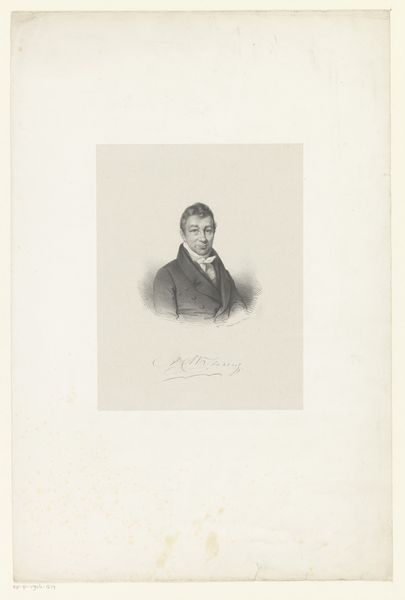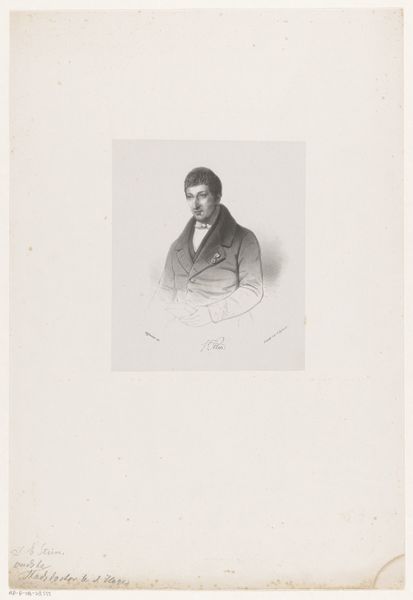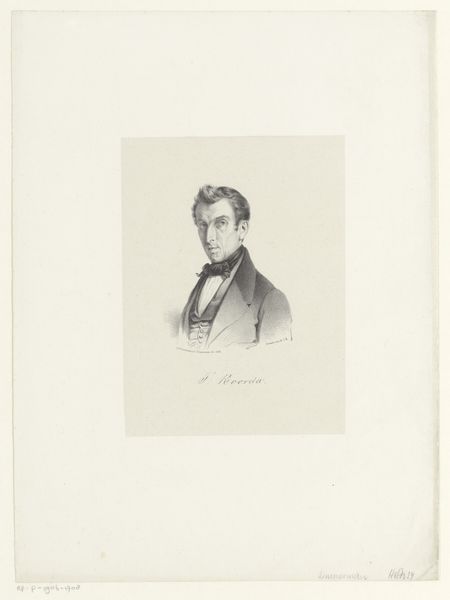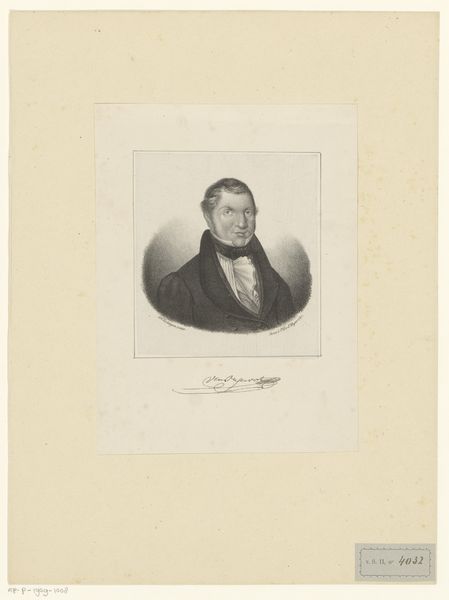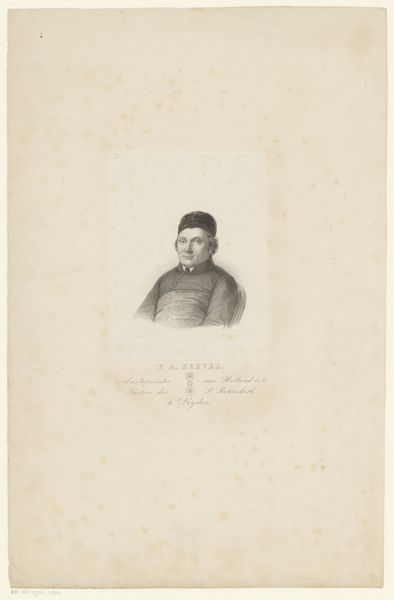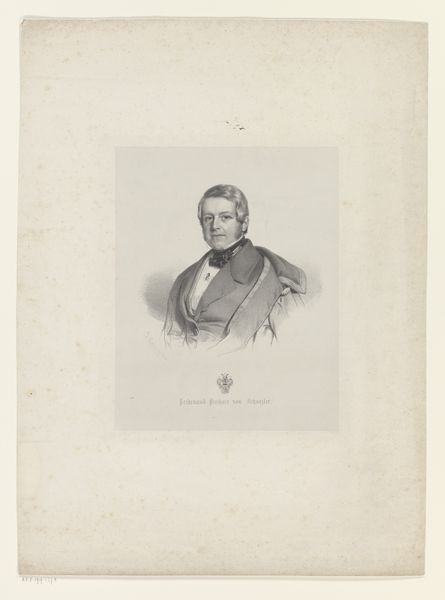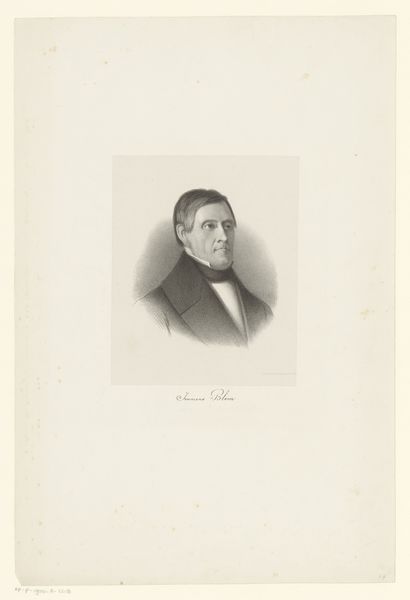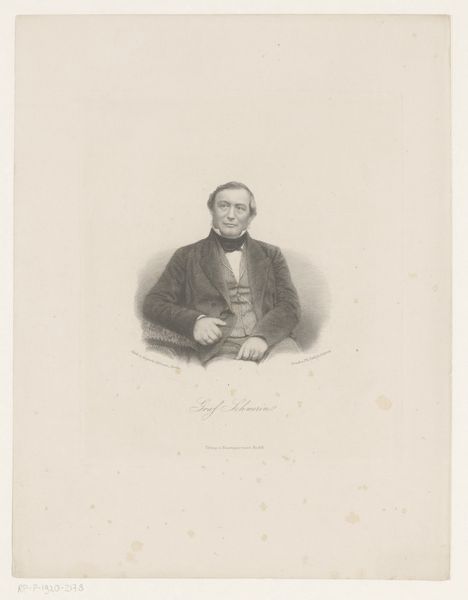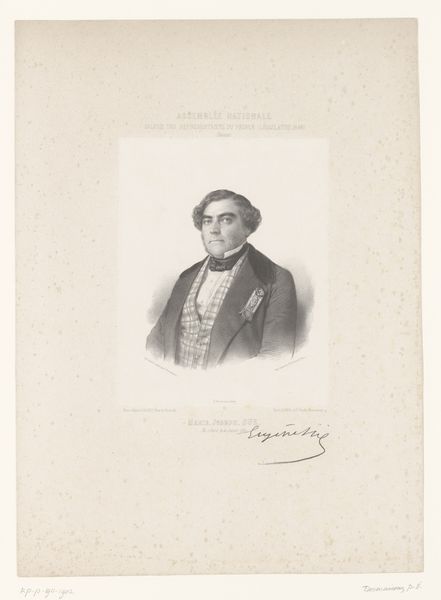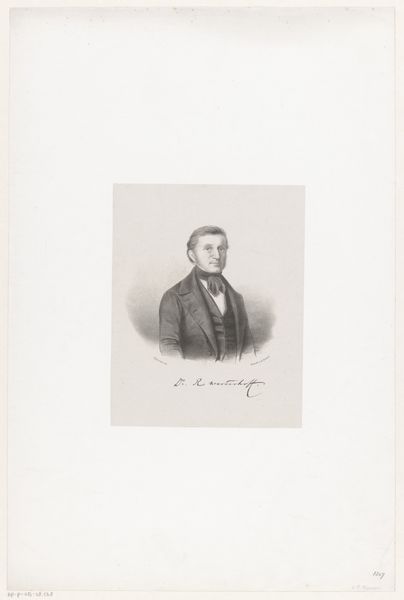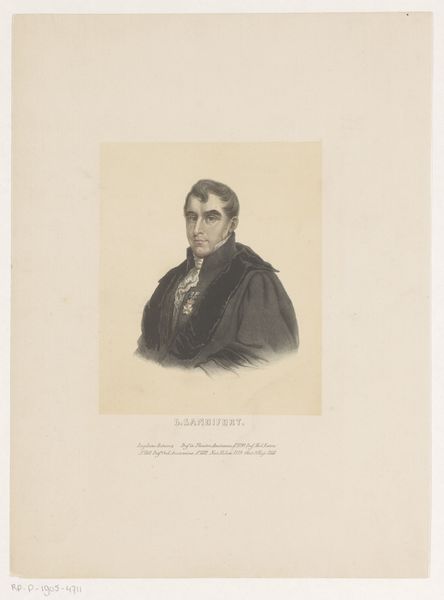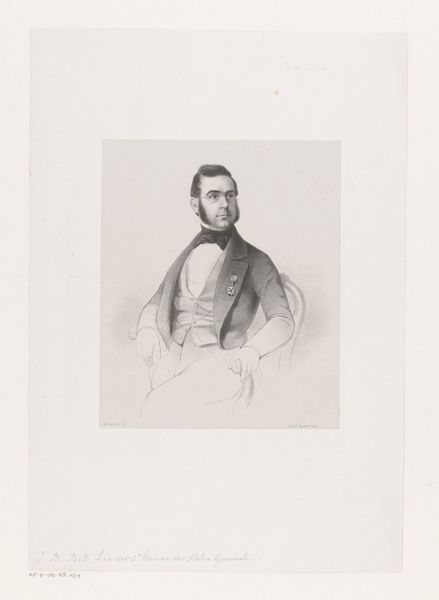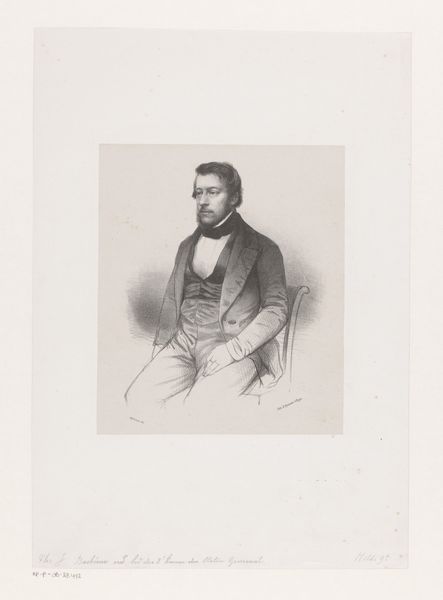
#
shape in negative space
#
light pencil work
#
negative space
#
pencil sketch
#
portrait reference
#
pencil drawing
#
portrait drawing
#
tonal art
#
a lot negative space
#
remaining negative space
Dimensions: height 270 mm, width 210 mm
Copyright: Rijks Museum: Open Domain
Editor: This is a pencil drawing entitled "Portrait of an Unknown Man with Glasses," created by Johan Hendrik Hoffmeister sometime between 1851 and 1883. I'm struck by how much empty space surrounds the figure; it makes him feel quite isolated, almost like a specimen. How do you interpret this work? Curator: That isolation you observe is interesting. Considering the period, post-Enlightenment, this portrayal of the individual begs the question: who has the privilege of being remembered and recorded? The identity of the sitter is now "unknown," lost, suggesting a lack of societal importance. But this sketch humanizes the sitter, challenging historical power dynamics by giving someone rendered 'anonymous' a presence. Editor: That's fascinating! I hadn't considered it in light of social power structures. Is the use of pencil, as opposed to paint, significant as well? Curator: Absolutely. Pencil sketches were often preliminary studies. The unfinished quality suggests the man wasn’t considered important enough for a more refined, time-consuming rendering. The labor of art often fell along societal expectations. It compels us to consider how artistic resources were distributed, implicitly reflecting underlying biases related to class, race, or gender. Who had their portrait painted versus sketched, and why? Editor: So, in a way, the sketch itself becomes a commentary on historical erasure? Curator: Precisely. It highlights the lives often deemed unimportant, pushing us to critically examine who is remembered and how those choices reinforce existing inequalities. Editor: This really changes how I see portraiture from this era. I'll never look at them the same way. Thanks so much! Curator: My pleasure! It is by understanding how social power intersects with representation that we unlock a deeper appreciation for art's capacity to be a powerful form of commentary.
Comments
No comments
Be the first to comment and join the conversation on the ultimate creative platform.
